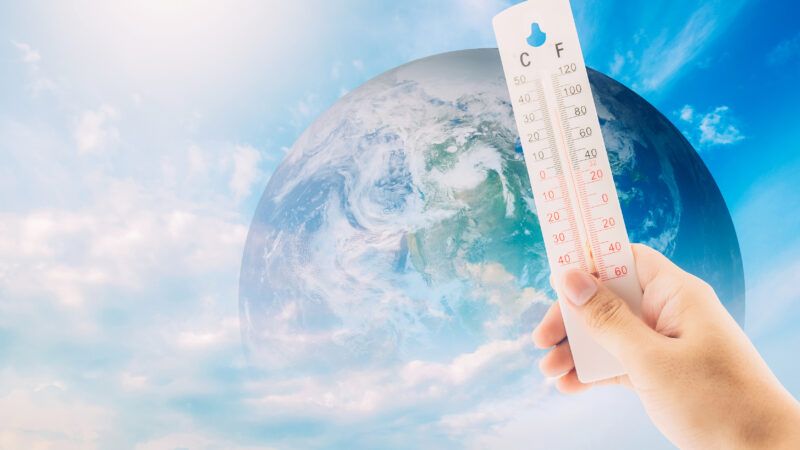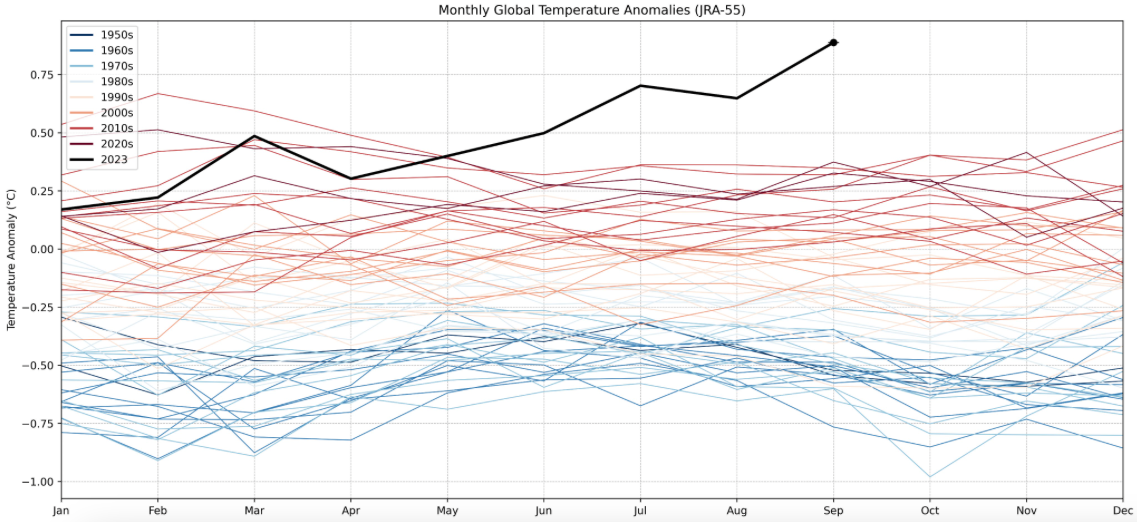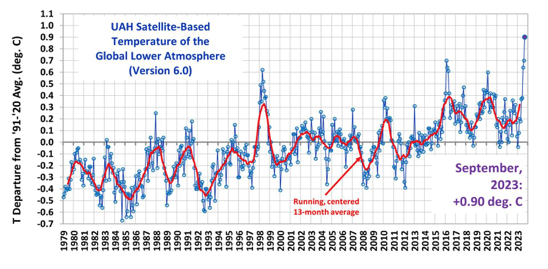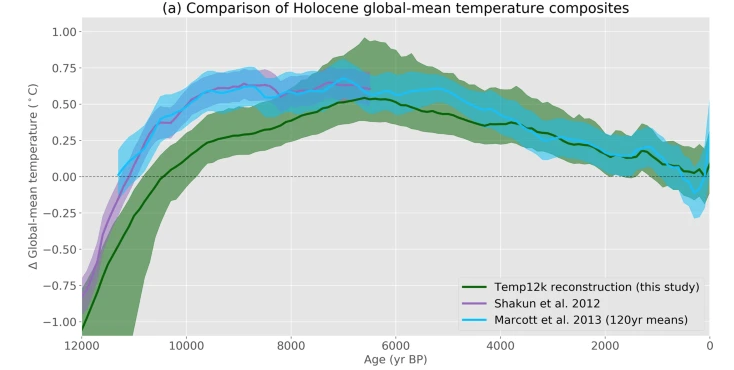This Might Be the Hottest Year You've Ever Experienced
But there may come a time when you remember it as cool.

Globally, the hottest June, July, August, and now September since modern instrumental surface temperature records started being kept in the 19th century occurred this year. Zeke Hausfather, a climate researcher associated with the ecomodernist Breakthrough Institute, noted that the global average temperature for September reported by the Japanese Reanalysis (JRA-55) of global temperature trends "beat the prior monthly record by over 0.5C, and was around 1.8C warmer than preindustrial levels."

Similarly, Europe's Copernicus Climate Change Service reports that its ERA5 reanalysis calculates that the average surface air temperature for last month was "0.93°C above the 1991-2020 average for September and 0.5°C above the temperature of the previous warmest September, in 2020." Combined with earlier surface temperature warming, the result is that September "as a whole was around 1.75°C warmer than the September average for 1850-1900, the preindustrial reference period." In addition, Copernicus researchers note that "the global mean temperature for 2023 to date [January through September] is 1.40°C higher than the preindustrial average (1850-1900)."
Climate reanalyses, like the JRA-55 and the ERA5, combine weather computer models with vast compilations of historical weather data derived from surface thermometers, weather balloons, aircraft, ships, buoys, and satellites. The goal of assimilating and analyzing these data is to create past weather patterns in order to detect changes in climate over time. Since climate reanalyses incorporate data from a wide variety of sources, they must be adjusted when biases are identified in those data.
Satellite temperature data trends basically mirror those of the JRA-55 and ERA5 datasets. University of Alabama in Huntsville climatologist Roy Spencer reports that the "global average lower tropospheric temperature (LT) anomaly for September, 2023 was +0.90 deg. C departure from the 1991-2020 mean." Spencer adds that this "establishes a new monthly high temperature record since satellite temperature monitoring began in December, 1978."

Consider that 6,500 years ago, during the earlier warmest post–ice age period called the "Holocene thermal maximum" by climatologists, average global temperatures are estimated to have been around +0.7C above the 19th-century average. A 2023 review article in Nature concluded, "Proxy evidence reported in several studies indicates that GMST [global mean surface temperature] was roughly 0.5 °C higher during this millennial-scale period [6,500 years ago] compared with 1850–1900, with most of the warming occurring at middle to high latitudes in the Northern Hemisphere."

Citing other global surface temperature datasets, Hausfather estimates that September 2023 temperatures will fall "somewhere between 1.7C (HadCRUT5) and 1.8C (Berkeley Earth) above the 1850-1900 average."
Some researchers have suggested that the current big boost in global average temperature is related to the massive amount of vaporized seawater that the January 2022 explosion of the undersea Hunga Tonga–Hunga Ha'apai volcano injected into the atmosphere. After all, water vapor is the principal greenhouse gas that warms the Earth's atmosphere. A January study in Nature Climate Change calculated that the extra water vapor would boost average global temperatures by up to 0.035 degrees Celsius over the next five years. But another study in the September Geophysical Research Letters estimated that in 2022 the sulfur dioxide plume from the volcano cut the amount of sunlight reaching the surface and thus cooled down average surface temperatures in the southern hemisphere by around 0.037 degrees Celsius. In other words, the 2022 volcanic eruption is having a relatively minor effect on current global temperatures.
It's worth comparing the recent global average temperatures to the Paris Climate Agreement's goal of "holding the increase in the global average temperature to well below 2°C above pre-industrial levels and pursuing efforts to limit the temperature increase to 1.5°C above pre-industrial levels." However, global weather fluctuates in response to various natural climatological phases such as the El Niño Southern Oscillation (ENSO) in the eastern Pacific Ocean. As it happens, a developing El Niño is warming the Pacific Ocean, thus contributing to the increase in current global surface temperatures. When the current El Niño wanes, average global temperatures are likely to fall back below the Paris Agreement's aspirational long-term 1.5-degrees-Celsius global average temperature threshold later this decade.
The upshot is that 2023 is highly likely to be the hottest year in the modern instrumental record.
Show Comments (335)